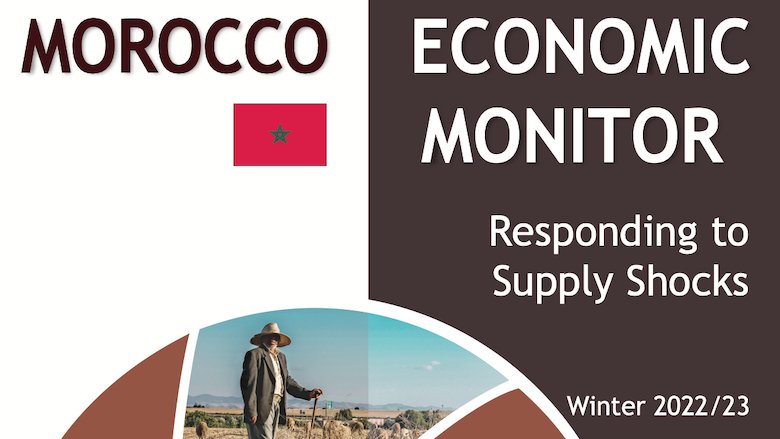After a strong post-COVID-19 rebound last year, Morocco's economy came under mounting pressure from overlapping supply shocks: a severe drought and a surge in commodity prices that have fed inflation.
Nonetheless, Morocco’s economic growth is expected to accelerate to 3.1 % in 2023, thanks to a rebound of the primary sector. Still, downside risks persist due to geopolitical tensions, including the war on Ukraine, the deceleration of Morocco’s main trading partners in the Eurozone, and new potential climate shocks. The report says real GDP growth dropped from 7.9 % in 2021 to an estimated 1.2% in 2022, while the current account deficit increased from 2.3% to 4.1 % of GDP.
The war on Ukraine, combined with the reordering of global supply chains, have triggered, as in much of the world, a surge in prices, with annual inflation peaking at 8.3 percent towards the end of 2022.
To soften the impact of food and energy prices on households, Morocco adopted a policy package that included general subsidies on staples and maintained pre-existing regulated prices. This approach stabilized the prices of goods and services that absorb almost one-quarter of the average household´s expenditures, avoiding what could have been a higher increase in poverty. It required the mobilization of additional public spending amounting to almost two percent of GDP.
Notwithstanding these measures, modest and vulnerable households suffered the most from the impact of rising food and other prices due to inflation. The Kingdom’s major social safety net reform will allow for an effective concentration of subsidies on the poor and vulnerable.
Morocco's Central Bank has taken a prudent approach to monetary policy by raising policy rates while maintaining an accommodative stance. Going forward, the authorities could consider complementing the anti-inflationary effort with structural policies to ease supply constraints.
